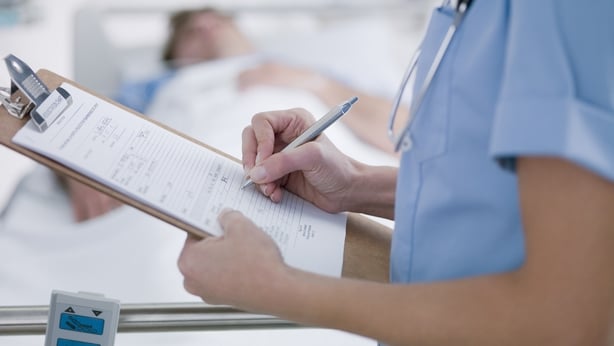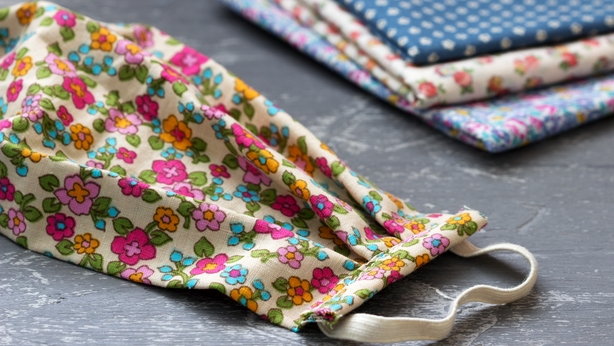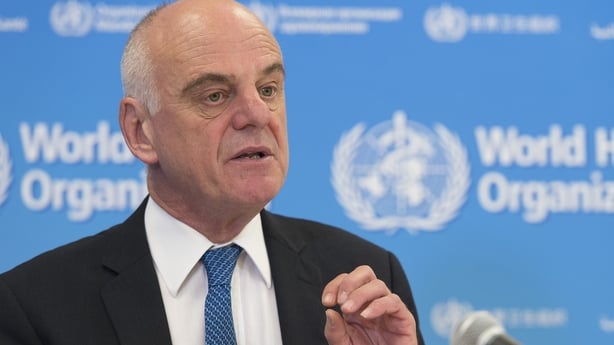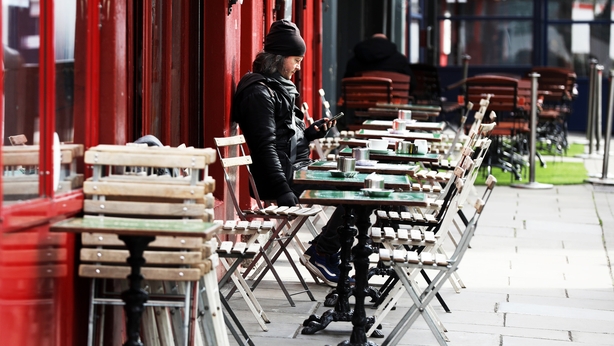There is something in the air now, not experienced for many months. You can find it on the streets, feel it in the parks and playgrounds and see it in people's eyes. A new hope has arrived, like an old friend.
Events change people, and there has been nothing like this in the past 100 years.
Epic does not begin to describe it all.
What was first reported as an atypical pneumonia in China in December, went on to become a viral epidemic that is still with us. But to a much lesser degree.
There is so much we still do not know about this seventh coronavirus to affect humans.
For example on immunity, no one is sure that if you have contracted Covid-19, whether you can get it again.
But thankfully, we can begin to look ahead now, to the work being done to develop specific Covid-19 treatments, widespread antibody testing, possibly a vaccine, while all of us live with this virus.
We are in Phase 2 of the easing of restrictions with Phase 3 to look forward to. The R value is stable so the transmission of the virus is smothered. Ireland and its people are adjusting to a new reality.
At the start of the emergency, there were genuine fears the coronavirus would overrun the health system here. The projections were dire. After all, before this, the system could not cope with 700 patients turning up at hospital emergency departments.

The service was already creaking at the seams, with record overcrowding, waiting lists and a crisis of confidence, due to the CervicalCheck controversy.
The pandemic certainly highlighted Ireland’s lack of intensive care bed and specialised staff capacity.
Over the past few months, the HSE built up ICU bed capacity, but a permanent solution is needed.
These problems had previously been highlighted in published reports from intensive care experts, sitting on the desks of officials at the Department of Health.
Before Covid-19, the health system had around 257 ICU beds, a low base in comparison to other EU countries.
When coronavirus struck, the HSE put in place around 285 extra ICU beds, which meant that the system was never overwhelmed, and managed at the peak, when on one day there were 160 patients with the virus in intensive care.
At this time, we remember those who died and our collective sadness for their families and friends.
There have been only a few days when no deaths were reported due to Covid-19.
The cold statistics belie the reality of how each death is an individual, taken from this world, in awful circumstances.
Over 1,700 people have gone to the stars. They will not be forgotten. Neither will other people who died during this tumultuous period from non Covid-19 conditions.
Coronavirus has also helped shine a light on the health system, revealing both its great strengths and systemic weaknesses.
For the future, Ireland needs to double its permanent intensive care bed capacity, build more isolation facilities, deal with the old infrastructure and boost the specialised staff.
While in general terms, the health system has performed well during the crisis, many staff were redeployed and will now have to return to their previous roles.
The testing and tracing system has been built in part by using redeployed staff and temporary facilities. That’s why a new testing model will be needed on a permanent basis for the future.
The HSE estimated late last week that Covid-19 may cost the health service €1.6bn this year.
A new framework for the delivery of health services over the next 18 months to three years is being finalised, to cope with the new reality.
In developing the future roadmap for healthcare, the changes that worked during this crisis should be retained and built upon and embraced by health unions.
It will be interesting to see to what degree the health system truly changes in the months ahead, or returns to the familiar regime.

One of the big indicators of change will be if we again see the familiar levels of emergency department overcrowding later in the winter. That will be something of a litmus test.
It will tells us if lessons have been absorbed, or to use that horrible new term some officials have started using – if there have been 'learnings'.
The hospital system is changing. Some of it is forced change.
The advice is that for people coming in for planned surgery in the future, they will self-isolate for 14 days and then they will be tested for the virus around 48 hours or less before they are admitted.
For emergency care, it will be different. There will be different streams for patients that arrive at hospital, Covid-suspected, Covid-confirmed and Covid-negative.
We are certainly not out of the woods yet with Covid-19. It remains a continuous threat to the world.
We do not yet really know how it responds to the seasons. It is not like influenza, which largely dies off in hot weather. In cold weather, droplets linger longer and travel further.
We have heard about the large number of patients that have recovered from Covid-19 which is good news. But there are times when the recovery from this virus is far from easy.
Some patients who were physically fit and contracted coronavirus and 'recovered' have continued to experience chronic shortness of breath. Others remain at risk of blood clots and stroke.
Read more:
Latest coronavirus stories
So it is not just a respiratory disease but a virus that attacks the body system in complex ways and the after-effects may linger.
One of the most fascinating contributions during the week was from Dr David Nabarro, the World Health Organization envoy on Covid-19. He was before the Dáil Special Committee on the Covid-19 response, via video-link from Switzerland.
He said that any vaccine that might become available would have to be fully tested and people would need to be sure that it was 100% safe. It would then be up to governments to decide what degree of side effects was acceptable with a vaccine.
He said that the clinical trials to show any vaccine worked could take probably 18 months. It could then be a year or two before there was a vaccine available for the world and possibly three and a half years before everybody had access to it.
It’s a sobering timescale and there is no guarantee that a vaccine will be developed.
A big concern is that some of the richer countries would try to buy up any vaccine first, leaving poorer ones in the lurch.
Dr Nabarro emphasised that there is no single 'playbook' for Covid-19. That it’s the mix of measures that matter. And despite all the debate about masks, the basics of social distancing and good hygiene matter the most.

He also emphasised that the issue of one metre or two for social distancing is really about the balance of risk. How much risk are people prepared to tolerate?
His view was that the bigger the social distancing gap the better but the necessary parts of the economy must also be kept going.
If there is little virus about, then the social distancing gap can be less. It comes down to choices that people and governments must make.
No one will be forced to go into a pub or restaurant - they will make the conscious choice and might wear a mask or not.
Dr Nabarro’s view on masks was that if they were make available free of charge, like in Alberta, Canada, people would be more likely to wear them.
The events of these past few months have been burned into our minds and the memories are part of the national psyche now.
I have tried to chronicle how we have coped with the events from week to week. It has been a privilege to write these reflective columns each week, as an addition to my radio and television work in RTÉ News.
I have tried to capture the mood of the country and intertwine that with events, key facts and the issues of the moment.
It has been wonderful to connect with people by email, social media and in other ways, hearing about their own various journeys too.
We have all taken different paths to get to this moment and the reopening of Ireland.

My first column 'A journey together' appeared here in mid-March, that’s 13 weeks ago. And what a journey it has been.
We have taken it together and we have mostly stayed together - a testament to our inner strength. We have endured many highs and lows and our differences.
I recall the awful news at one of the press briefings, in late April, that 77 people had died from Covid-19. That was a dark moment - first and foremost, for the family and friends of those affected. It also brought home to everyone the seriousness of catching this virus. And how certain groups were particularly vulnerable.
On another day in mid April, there were 1,068 cases reported in 24 hours. These were frightening times, when no one could be sure what was coming next.
I recall driving to the Department of Health one evening for a briefing in April and the skies were very dark.
As I turned around Merrion Square, the heavens opened from sullen clouds and I have never seen a downpour like it. It felt like the world was coming to an end. However, we all endured.
We learned to bury or cast away fears and to follow the science. And to live with uncertainty, despite the uneasy feeling that it brings.
Six months ago, most people had never heard of the R value, the National Public Health Emergency Team, respiratory etiquette, social distancing, cocooning, or flattening the curve.
Now, we are moving on and there are new memories to create. Summer is here. We are leaving lockdown. The worst case scenario has not come to pass and we are thankful for that.
The events of the past few months have reshaped Ireland and us all as a people. Our perspectives and relationships are changed. We will probably never look on the world, in quite the same way again.
It has been a journey to the centre of our souls.






